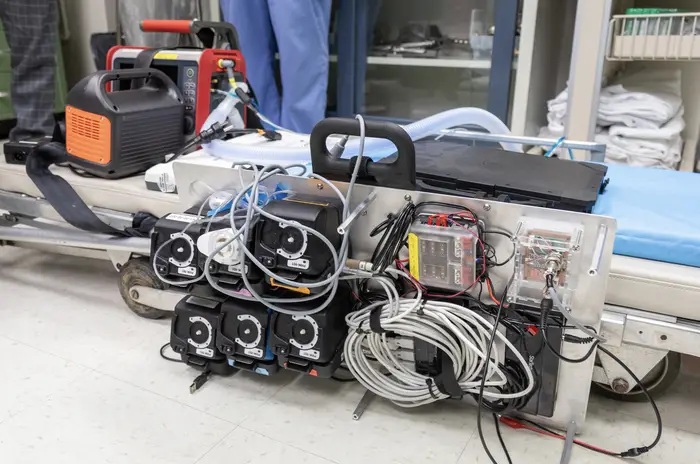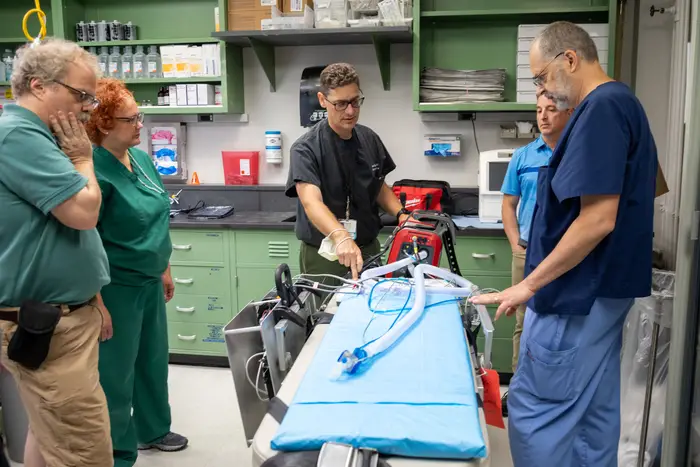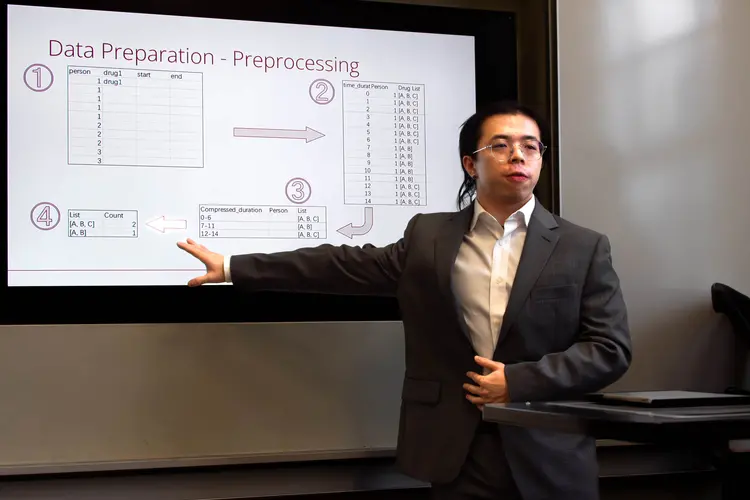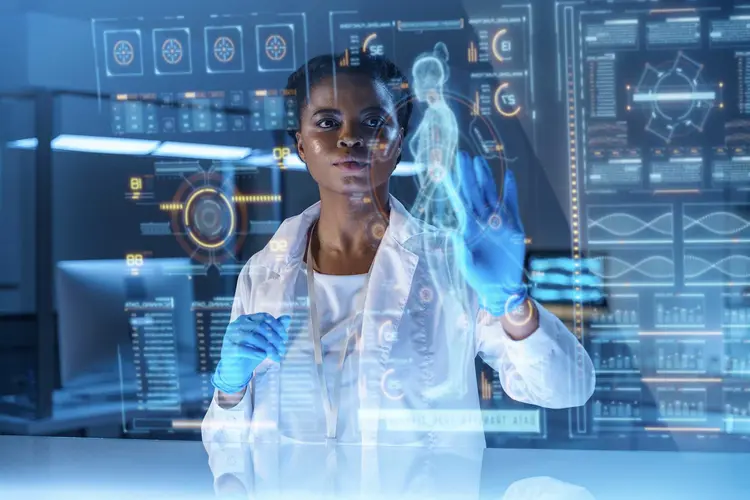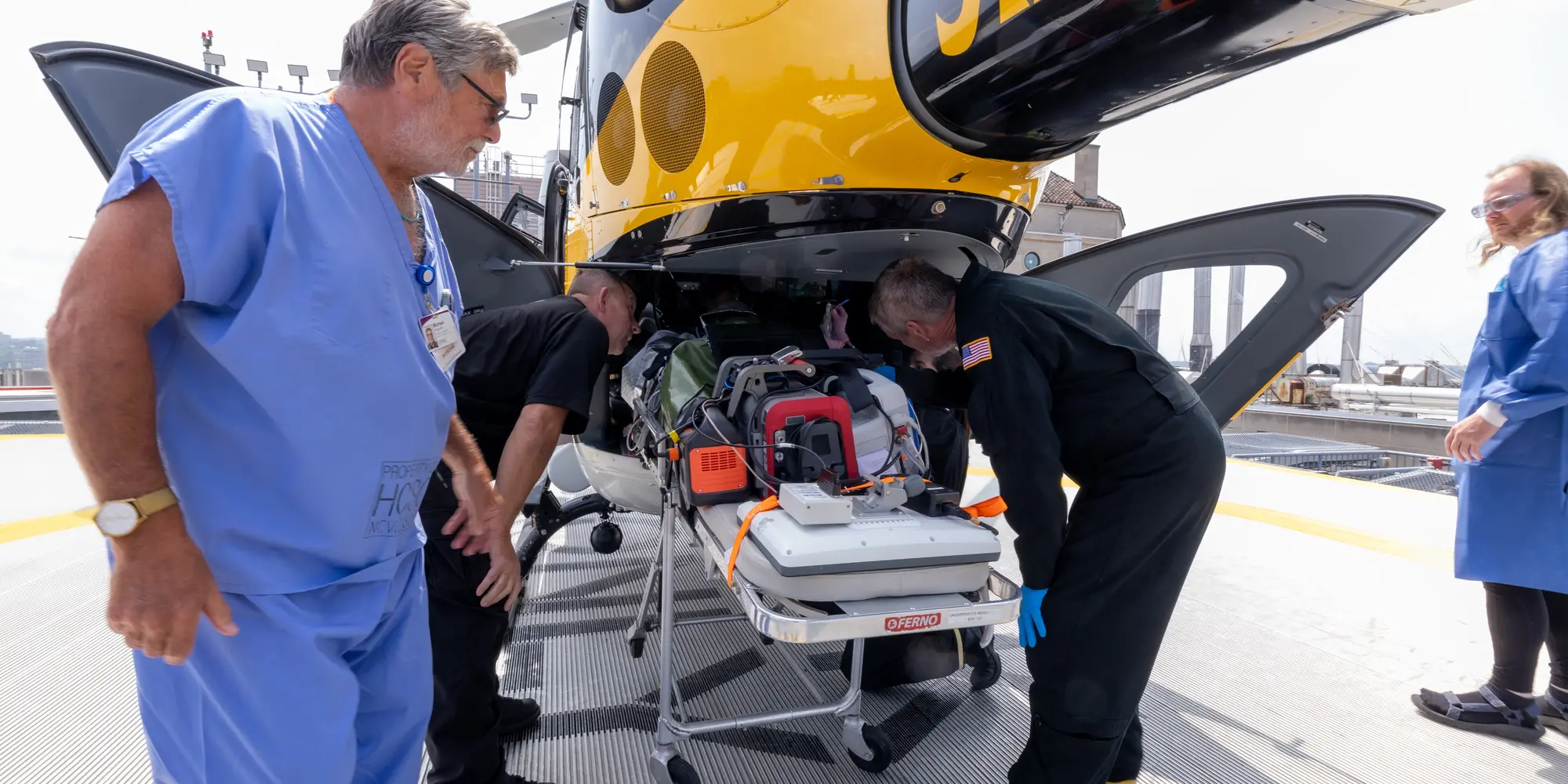
Autonomous Trauma Care Extends ‘Golden Hour’ for Saving Lives
Media Inquiries
A team of Carnegie Mellon University and University of Pittsburgh School of Medicine researchers have developed and successfully tested an autonomous trauma care system that could save the lives of traumatically wounded members of the military, victims of traffic accidents or individuals injured in remote locations.
The breakthrough in trauma care, announced today in Intensive Care Medicine Experimental(opens in new window) and funded by the U.S. Department of Defense, nearly quadrupled the “golden hour” during which surgeons could address internal traumatic bleeding while in emergency ground and air transport.
“Under normal conditions, if we can get somebody with severe trauma to the hospital within an hour, there’s a good chance that we can save them,” said the project’s scientific lead Michael R. Pinsky(opens in new window), M.D., professor of critical care medicine, bioengineering and clinical and translational medicine at Pitt. “For the first time in the history of medicine, we took an animal in a critical state onto a helicopter and autonomously brought it back healthier than when it was placed in emergency transport hours earlier. The implications this has for treating people in the field with trauma are phenomenal.”
Working off a handcrafted decision tree developed in clinical settings by the Pitt critical care doctors, CMU scientists created software that adapted that knowledge for use in the field and then collected data to train machine learning algorithms to optimize results.
“One of the biggest advantages of machine learning is that you can personalize the treatment to the individual,” said Artur Dubrawski(opens in new window), Alumni Research Professor of Computer Science at the Robotics Institute in the School of Computer Science who led CMU’s role in the project. “The clinically guided decision trees can accommodate different casualty cases and scenarios of care, but the guidance doesn’t change from one person to another. Our machine learning algorithm can use the individual’s vital sign measurements to provide care that’s optimized to the patient.”
The multidisciplinary Pitt team, in collaboration with Dubrawski and a team of CMU Auton Lab(opens in new window) computer scientists Xinyu Li, Anthony Wertz, Jim Leonard and Robert MacLachlan(opens in new window) validated a key of their Trauma Care in a Rucksack(opens in new window) (TRACIR) system, designed to fit inside a backpack that could be delivered by drone to remote locations.
“Our goal has always been ambitious,” said Dubrawski, who led CMU’s role in the project. “A backpack you can toss next to a wounded warrior opens on its own and crawls on top of the person and begins autonomously assessing the situation, collecting vitals and providing essential care. That was our vision.”
In the successful test, a minimally invasive, closed-loop control algorithm, called Resuscitation based on Functional Hemodynamic Monitoring (ReFit), autonomously gave intravenous fluids, blood and drugs to maintain vital functions for three to five hours without human intervention, during transport by ground ambulance and helicopter.
"We are excited about the potential to soon apply this technology to saving the lives of people injured in austere environments," said principal investigator Ronald Poropatich, M.D., director of the Center for Military Medicine Research(opens in new window) and professor of medicine at Pitt(opens in new window).
“It’s great motivation for AI and robotics, because we want to save lives,” added Dubrawski. “And I think we can.”
This work is supported by the US Army Medical Research and Materiel Command under Contract No. BAA W81XWH-19-C-0101 and W81XWH-19-C-0083. The views, opinions and/or findings contained in this report are those of the authors and should not be construed as an official Department of the Army position, policy or decision unless so designated by other documentation. In conducting research using animals, the investigator(s) adhered to the Animal Welfare Act Regulations and other Federal statutes relating to animals and experiments involving animals and the principles set forth in the current version of the Guide for Care and Use of Laboratory Animals, National Research Council.
